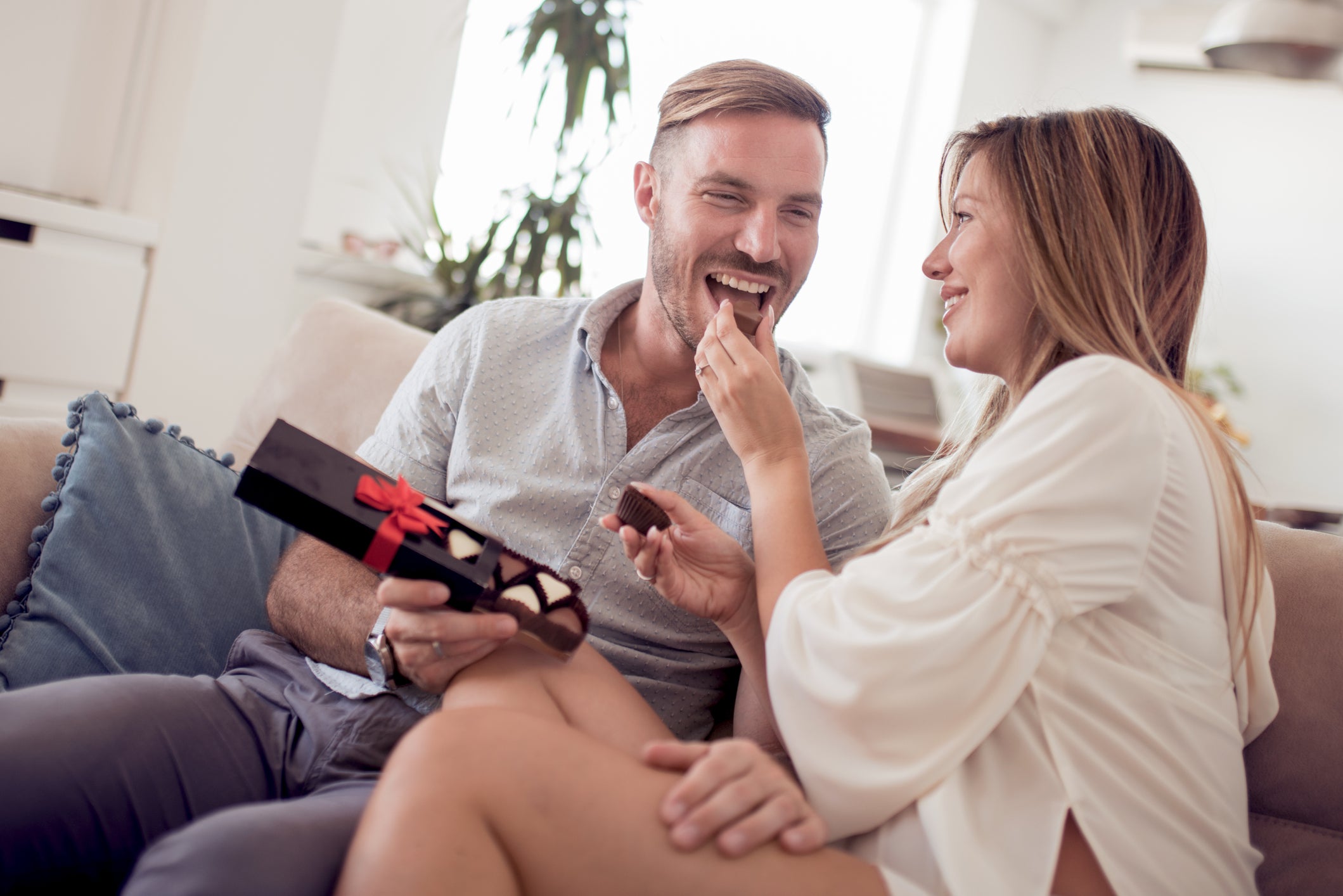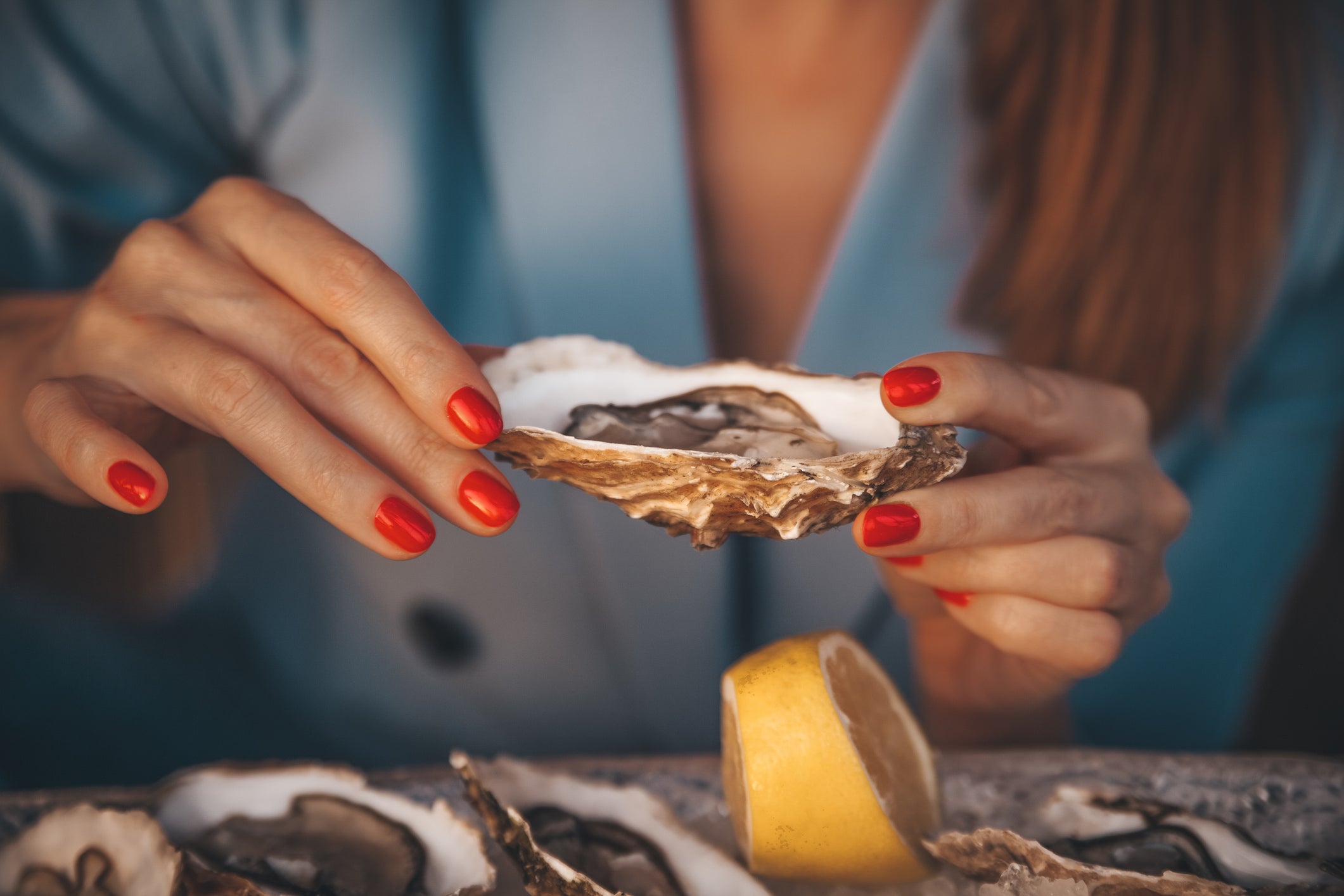
Sex sells. And nothing speaks to the sheer success of this advertising mantra quite like oysters. Because despite resembling wet loogies, these slippery, salty molluscs are considered the food du jour for a romantic night out. In fact, we’re so convinced that they’re vital tools of seduction that sales of oysters soar in the UK around Valentine’s Day. But that’s what the day has come to revolve around, along with chocolates, champagne, caviar and truffles. All are claimed to send us into a sexual stupor.
But just how lusty do these foods actually make us? Does science back up their titillating claims? It turns out: not really. Chocolate has the longest-running association with sex among the aforementioned Valentine’s staples, and is believed to have been an aphrodisiac among the Aztecs. Rumour had it that Aztec ruler Moctezuma consumed up to 50 mugs of the stuff a day – although historians believe this to be something of an over-exaggeration. Surely the only thing to be achieved from drinking that much chocolate is a Guinness World Record for time spent on the toilet. Still, there’s no doubt that our ancestors believed strongly in the erotic power of chocolate.
Food historian Samantha Bilton tells me that chocolate was primarily consumed back then as a holistic health drink – something “very bitter, [and] almost medicinal”, she says – rather than something to get you in the mood for love. It wasn’t until the 19th century that chocolate started being produced in a solid form, with the invention of milk chocolate arriving only in 1879.
“There are some studies that point to certain compounds in chocolate producing an aphrodisiac effect,” she says. But even then, these compounds don’t directly result in horniness – rather, they’re linked to chemicals that result in feelings of happiness, love and sexual desire. These are also found in such small concentrations in chocolate that they’re unlikely to have much, if any, aphrodisiac effect at all.
The campaign to make chocolate a Valentine’s Day staple had nothing to do with these supposed chemical reactions. Cadbury had been packaging chocolates in elaborate, highly collectible “Fancy Boxes” that the late Victorians adored, Bilton says. In the 1860s, the brand became the first to introduce heart-shaped boxes for Valentine’s Day, making it a permanent fixture during the season.
As journalist and author Carol Off wrote in her comprehensive history of chocolate, Bitter Chocolate: Anatomy of an Industry: “The Cadburys found a way to appeal to their ambiguous prudery, playing up the innocence of chocolate as a sensual indulgence. It was the firm’s marketing genius that first made chocolate a part of Valentine’s Day in Great Britain and a symbol of romantic love.”
In the case of the oyster, Kate Lister, an expert on the literary history of sex work, said it is the shape of the shellfish, with all its gentle folds and pearls nestled in flesh, that is its most obvious association with sex. She wrote in an article for The i that the word “oyster” has been slang for “vulva” since the 16th century, with Victorian and Elizabethan writers, poets and playwrights referring rather graphically to “gaping” and “yawning” oysters when writing about sex.
Beyond the mollusc’s suggestive shape was its high nutritional value, which was particularly prized during a time when people had poor diets. They are rich in vitamin D and B12, copper, zinc and magnesium, essential nutrients that are said to contribute to virility and a healthy sex drive. Drew Smith, historian and author of Oyster: A Gastronomic History, says that this was what drove the oyster’s popularity in the Victorian era.

“In a very practical sense, if you had the kind of awful diet that most people had in times past, then the nutritional benefits of oysters were pretty alpha and desirable,” he says. “In fact, if doctors knew then what we know now, they’d be prescribing them [to improve diets].”
But wouldn’t you have to eat quite a lot of oysters in order for them to have any sort of sexual effect? The notoriously promiscuous Giacomo Casanova wrote in his memoir that he ate 50 oysters every morning in order to maintain his high libido. While Casanova’s claims may be exaggerated, Smith says that oysters were typically sold by the basket, so people used to eat a lot of them anyway. “You didn’t tend to eat just one lightly,” he says. “You wouldn’t go to a restaurant and buy just one oyster. Wherever you look in history, people ate a lot of them. They would usually be sold in pubs, bars, brothels, places where there would usually be an association with alcohol. Between the two... I don’t know which one makes you randy.”
A lot of the time there’s more at play inside your brain that leads to the desired effect than any food you might eat— Bryan Quoc Le, food scientist
The answer is alcohol. While there’s nothing in the chemical composition of booze that makes it an aphrodisiac, per se, it does lower inhibitions, which in turn makes people more relaxed and more likely to be open to having sex. And, really, this is the key to having more and better sex: not inebriation, but relaxation.
It’s all about the atmosphere, says food scientist and consultant Bryan Quoc Le: “One of the mechanisms in which a lot of so-called aphrodisiacs function is that they relax your muscles and reduce tension. But you can do that yourself. If you’re able to combine an experience – such as a date that’s going well – alongside some nice food, these play a role in your brain [creating] a holistic experience that ends with you feeling sexual.”
So sex is more likely to be on the agenda if you’re eating chocolate at the end of a nice evening with someone you’re attracted to. Or at least more likely than if you were on the sofa all day eating oysters by yourself. “It’s like any other human interaction,” Le says. “A lot of the time there’s more at play inside your brain that leads to the desired effect than any food you might eat.”

As for food products that claim to have aphrodisiac effects because they contain certain compounds, Le warns that these are marketing ploys. “For most foods that might have some effect, you’re going to have to consume quite a bit,” he says. Even then, it’s unlikely to find a balance between a product inducing arousal while also still tasting good. “[It’s] very hard to formulate and actually embed into the composition of a food product because at those levels the taste is awful,” he says. “The texture is off. We’re talking taking them at a supplement level to actually see an effect.”
So this Valentine’s Day, perhaps the best advice of all is not to believe that any specific food will give you a sexual edge. Instead, the best thing you can do is chill out. Take the pressure off yourself. Just have a nice time with someone you like. If it does tickle your fancy, you can still neck some oysters. Just don’t expect it to be the magic bullet – you’ll have to go to Ann Summers for one of those.







